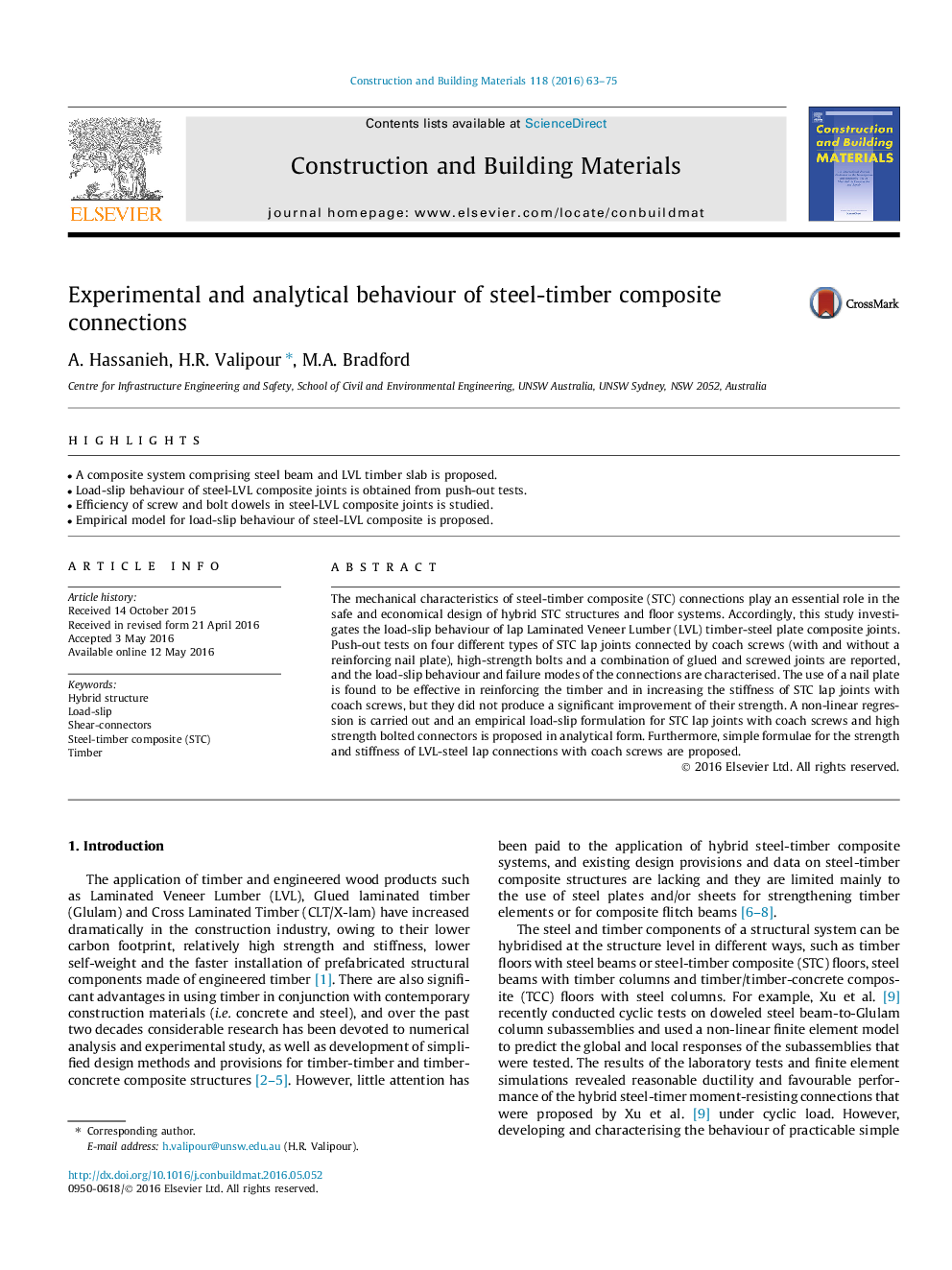| Article ID | Journal | Published Year | Pages | File Type |
|---|---|---|---|---|
| 255883 | Construction and Building Materials | 2016 | 13 Pages |
•A composite system comprising steel beam and LVL timber slab is proposed.•Load-slip behaviour of steel-LVL composite joints is obtained from push-out tests.•Efficiency of screw and bolt dowels in steel-LVL composite joints is studied.•Empirical model for load-slip behaviour of steel-LVL composite is proposed.
The mechanical characteristics of steel-timber composite (STC) connections play an essential role in the safe and economical design of hybrid STC structures and floor systems. Accordingly, this study investigates the load-slip behaviour of lap Laminated Veneer Lumber (LVL) timber-steel plate composite joints. Push-out tests on four different types of STC lap joints connected by coach screws (with and without a reinforcing nail plate), high-strength bolts and a combination of glued and screwed joints are reported, and the load-slip behaviour and failure modes of the connections are characterised. The use of a nail plate is found to be effective in reinforcing the timber and in increasing the stiffness of STC lap joints with coach screws, but they did not produce a significant improvement of their strength. A non-linear regression is carried out and an empirical load-slip formulation for STC lap joints with coach screws and high strength bolted connectors is proposed in analytical form. Furthermore, simple formulae for the strength and stiffness of LVL-steel lap connections with coach screws are proposed.
